
by Tanya Keam | Oct 29, 2015 | Alkaline, Client information, Daily Rituals, DIY Wellness Tips, Emotions, Gynaecological, Liver Health, Menstrual cycle, Nourishing, Seasonal living, Spring, Stress
SPRING into Spring !
Spring is the season of growth and transformation. We come out of the hibernation of Winter and move forward with bursting flowers, warmer weather and longer days of sunlight. There is a sense of renewal and new life all around.
While Winter was a time to conserve energy and reduce activity, spring is a time of regeneration, new beginnings, and a renewal of spirit.

Spring is the ideal time for cleansing and rejuvenation for overall health and well-being, as well as corresponding to the “Wood” element, which in turn is conceptually related to the liver and gallbladder organs. According to the philosophy of Chinese medicine, the liver is responsible for the smooth flow of energy movement throughout the body. When the liver functions smoothly, physical and emotional activity throughout the body also runs smoothly. We even feel like doing more exercise and being outside!
Imbalances that can occur during Spring:
Feeling frustrated, irritable, anger outbursts
Insomnia, restless sleep
Temporal headaches, migraines
Depression
Abdominal discomfort
Alternating bowel motions
Lack of motivation
A feeling like there is a lump in the throat
Premenstrual symptoms
Irregular, painful periods
Bitter taste in the mouth
Stiff joints
Dry mouth and throat
Ringing in the ears
Sore red eyes, blurry vision
Seasonal acupuncture treatments a minimum four times a year can serve to regulate the inner organ systems and can correct minor annoyances before they become health problems. Acupuncture can help improve the overall health of your liver as well as treat stress, anger and frustration, which are often associated with liver disharmony.

Stretch – The liver controls the tendons. According to Chinese medicine, the liver stores blood during periods of rest and then releases it to the tendons in times of activity, maintaining tendon health and flexibility. Incorporate a morning stretch into your routine. Try a local yoga class!

Eye Exercises – The liver opens into the eyes. Although all the organs have some connection to the health of the eyes, the liver is connected to proper eye function. Remember to take breaks when looking at a computer monitor for extended periods of time and do eye exercises.
Eat Greens – Green is the colour of the liver and of spring time. Eating young plants – fresh, leafy greens, sprouts, and immature cereal grasses – can improve the liver’s overall function.
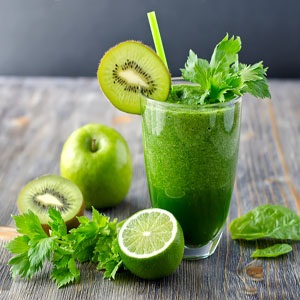
Taste Sour – Foods and drinks with sour tastes are thought to stimulate the liver’s movement. Put lemon slices in your drinking water, use vinegar and olive oil for your salad dressing. Garnish your sandwich with a slice of dill pickle.
Do more outdoor activities – Outside air helps energy to flow. If you have been feeling irritable or stuck, find an outdoor activity to smooth out that liver stagnation. Try bush walking or take up swimming.
Enjoy milk thistle tea
Milk thistle helps protect liver cells from incoming toxins and encourages the liver to cleanse itself of damaging substances, such as alcohol, medications, pesticides, environmental toxins, and even heavy metals such as mercury.
Take care of you, see you in the clinic,
TK xx
Tanya Keam Wellness is an experienced health clinic on the Sunshine Coast. Helping you to feel better in all aspects of your health and wellbeing.
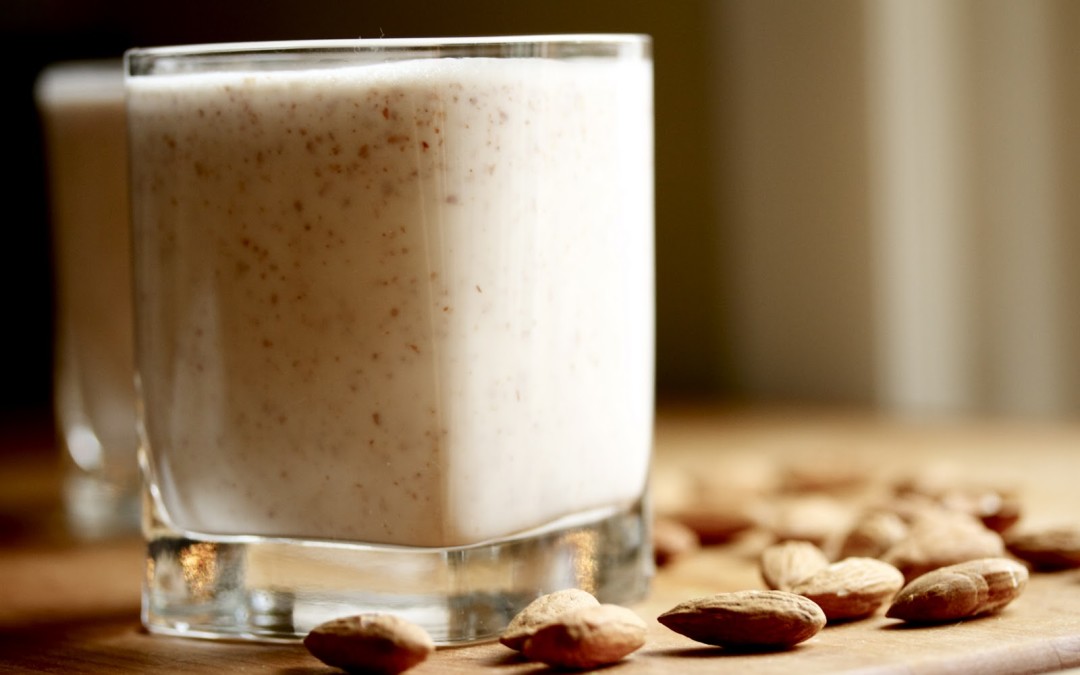
by Tanya Keam | Feb 13, 2015 | Alkaline, Chinese medicine, Client information, Dairy alternatives, Dairy free, DIY Wellness Tips, Homemade, Nourishing, Nutrition, Sunshine coast, Vegan, Vegetarian, Wellness
Why don’t people consume dairy?
1. Some people are lactose intolerant which means their body has an inability to digest lactose, a sugar found in milk and to a lesser extent dairy products (cheese, yoghurt, butter etc), causing side effects. In most cases, symptoms include abdominal bloating and cramps, flatulence, diarrhoea, nausea, rumbling stomach or vomiting.
2. Allergic reactions to dairy
3. Dairy is considered a food that can cause inflammation in the body
4. Ethical reasons behind the production of dairy products
5. Dairy causes digestive discomfort, bloating or loose stools even though they aren’t lactose intolerant
Dairy alternatives are very popular these days and can include:
Almond Milk
Almond milk is a great substitute for milk in every aspect of cooking and baking as well as over cereal, in smoothies or in your morning coffee/cuppa. Creamy, usually just a little sweet, high in vitamin E and other essential nutrients, and more alkaline than other nuts. Almond milk is almost always found in with the other non-refrigerated boxed beverages.
You can also use other nuts such as cashews, brazil or hazelnuts as a nut milk.
These dairy-free milk alternatives are usually not soy-free however, as they almost always contain soy lecithin. You can avoid soy by making your own milk at home!
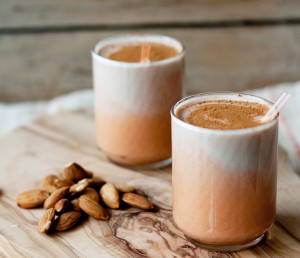
Half a cup of almonds (or other nuts) – soaked in filtered water overnight in the fridge
3 cups of filtered water
Pinch of salt
2 dates
1/4 teaspoon vanilla essence or vanilla bean
Blend on high for 1 minute in a good blender
Strain the liquid through a nut bag or clean mesh cloth
Refrigerate and consume within 3 days
You can make smaller batches if you know you’re not going to get through it all
Coconut Milk
Prepared from fresh coconut meat (flesh), coconut milk is a great option for richer dairy-free dishes. Although it is high in fat and saturated fat (their good fats!), coconut milk is a delicious way to add creaminess to any number of dairy-free dishes. I wouldn’t recommend in your tea or coffee but it goes great in curries, puddings, dairy-free whipped cream or desserts and with your cereal or granola.
Coconut meat can also be made into a yoghurt and flavoured with fruit. The yoghurt is very thick and creamy.
Rice Milk
Rice milk is generally thinner in consistency than nut milks or soy milk, and it has a lighter, sweeter flavour that is perfect for using with cereal or in coffee/tea. While rice milk works well in baking recipes, for using in dairy-free sauce recipes it generally requires some sort of binding or stabilising agent such as agar flakes, eggs, flour or anthem gum. I would recommend to use rice milk in coffee, tea, smoothies or own its own.
Soy milk
Soy milk is made from the soy bean and are a complete protein source and a dietary staple in many cultures. It is one of the richest of non-dairy milk alternatives next to coconut milk, contributing density through fat, fiber and protein while still free of cholesterol and saturated fats. Excellent for baking, cooking, in a glass or over cereal, soy milk is an easy way to add protein and dimension to your recipes.
Soy contains phytoestrogens called isoflavones that may mimic the activity of the hormone estrogen in your body. I would recommend avoiding soy if you have a tendency toward high oestrogen and if you do consume soy, go for non-genetically modified (non-GMO) and certified organic. Perhaps rice or nut milk would suit you better, or just mix it up.
Take care of you, see you in the clinic,
TK xx
Learn more > http://www.tanyakeamwellness.com

by Tanya Keam | Feb 12, 2015 | Acidic, Alkaline, Chinese medicine, Client information, Cultures, Daily Rituals, DIY Wellness Tips, Fermented, Food, Gut flora, Immune Support, Kombucha, Nourishing, Nutrition, Parasites, Probiotic drink, Sunshine coast
What is gut flora?
Gut flora (microbiota) is the name given today to the microbe population living in our intestines. It contains tens of trillions of micro-organisms, including at least 1000 different species of known bacteria with more than 3 million genes (150 times more than human genes). Microbiota can, in total, weigh up to 2 kg. One third of our gut microbiota is common to most people, while two thirds are specific to each one of us. In other words, the microbiota in your intestine is like an individual identity card.
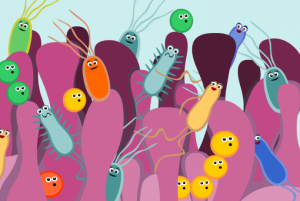
Why is it important?
While each of us has a unique microbiota, it always fulfils the same physiological functions and they have a direct impact on our health:
•It helps the body to digest certain foods that the stomach and small intestine have not been able to digest.
•It helps with the production of some vitamins (B and K).
•It helps us combat aggressions from other microorganisms, maintaining the wholeness of the intestinal mucosa.
•It plays an important role in the immune system, performing a barrier effect.
•A healthy and balanced gut microbiota is key to ensuring proper digestive functioning.
What does pH in the body mean?
pH stands for power of hydrogen, which is a measurement of the hydrogen ion concentration in the body. The total pH scale ranges from 1 to 14, with 7 considered to be neutral. A pH less than 7 is said to be acidic and solutions with a pH greater than 7 are basic or alkaline.
How does this affect our health?
When we eat acid-forming foods, our body works to bring our blood pH back into balance by releasing alkaline-rich minerals into our bloodstream (e.g. calcium, phosphorus and magnesium).
If we are not eating enough alkaline-forming foods, then our body has to pull these minerals from our bones, teeth and organs. This can compromise our immune system, cause fatigue and make us vulnerable to viruses and disease.
How do we keep the pH balanced to prevent illness and disease?
Maintaining an approximate 80% alkalinity and 20% acidity diet is the best way to maintain wellness.
Acidic foods (alcohol, refined sugars, coffee, fast foods, chocolate, red meat, fish, dairy) are foods that are associated with disease. A highly acidic diet creates a favourable environment for yeast, fungus, abnormal cells and even parasites to multiply and grow.
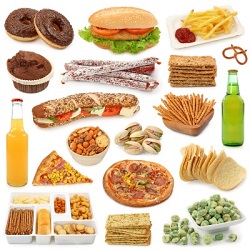
Alkaline foods (most fruit and vegetables such as leafy greens, lemons, citrus fruits, berries, broccoli, cabbage, nuts, herbal tea) are foods which maintain and prevent disease from occurring in the body.
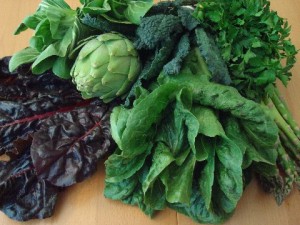
What are intestinal parasites?
Even the word “parasite” sounds terrible. Like a villain, living off the goodness within you! Eeek!
Parasites infect the gastro-intestinal tract of humans and other animals. They can live throughout the body, but most prefer the intestinal wall. Means of exposure include: ingestion of undercooked meat, drinking infected water, and skin absorption.

What’s the plan to get them out of you ASAP!?
Antibiotics are advised for intestinal parasites from your GP. However there are other options and/or in combination:
Firstly, the 4 R’s:
1. Remove the micro-organisms that shouldn’t be there, as well as toxic foods (acidic) you shouldn’t be eating
2. Replace/restore the nutrients, bacteria, intestinal flora (pre and probiotics)
3. Repair the cell on every level
4. Relaxation! – Stress, anxiety etc
Remove – Many qualified health practitioners can sort a digestive cleanse for you, using anti-microbials which first rid the body of the unwanted organisms. This can be a long haul as the organism will continue to reproduce.
Including colonics – a colon enema cleanse which literally involves flushing the colon with water and herbs.
Removing foods that have inflammatory properties will aid the whole process – wheat, gluten, soy, dairy, sugar, alcohol, fructose.
Replace/restore – In addition to the above digestive cleanse, probiotics are taken at the same time to restore the yummy gut flora. Probiotics can be taken in tablet form, yoghurt, kombucha (a fermented herbal tea – see my how to make kombucha post) or fermented vegetables. I would recommend all of the above, except for dairy during the cleanse.
Maintaining a diet that is 80% alkaline will create an unhappy environment for the parasites as they enjoy the acidity.
Repair – Additional supplements and herbs can be prescribed for you which will improve your overall health, aside from probiotics etc. Such as immune support which is a common imbalance to get parasites, worms etc in the first place. Seeking treatment from a qualified practitioner such as Chinese medicine would be ideal.
Relax – A key rule in life, not just for intestinal upsets. Regular exercise, sleeping well, good emotional-mental health, breathing deeply etc.

Note:
Intestinal parasites can be missed in stool samples, so ask your doctor for 2 or 3 samples to do a week a part just in case.
Following up with stool tests 3 and 6 months after being diagnosed is ideal. They will most certainly want to survive in you!
You may think “oh gosh it will be such a long process to rid these parasites” … but your whole digestive system will have improved and I will guarantee you will learn more about your health, diet and lifestyle in the process !!
Take care of you, see you in the clinic,
TK xx
Learn more > http://www.tanyakeamwellness.com













